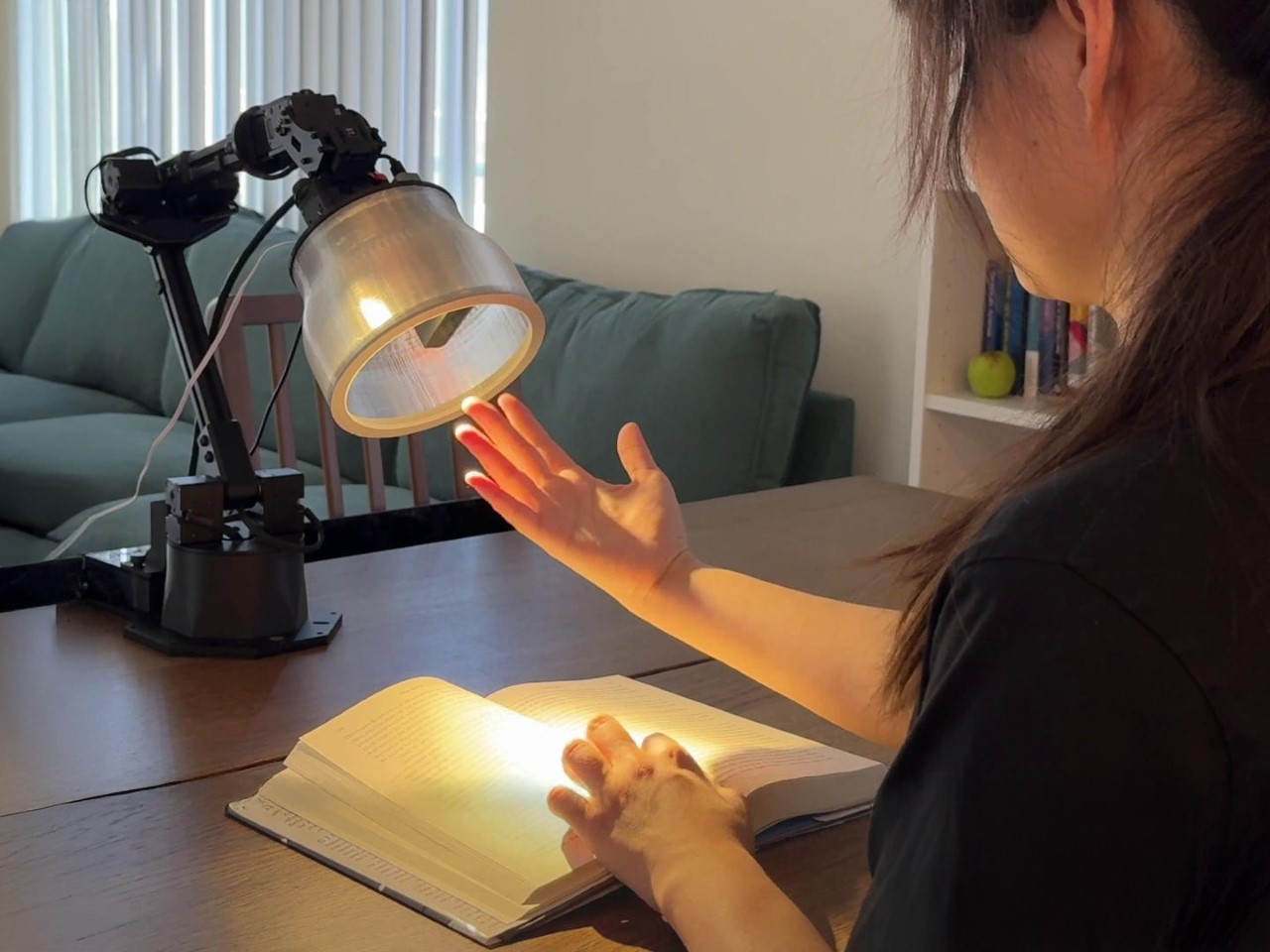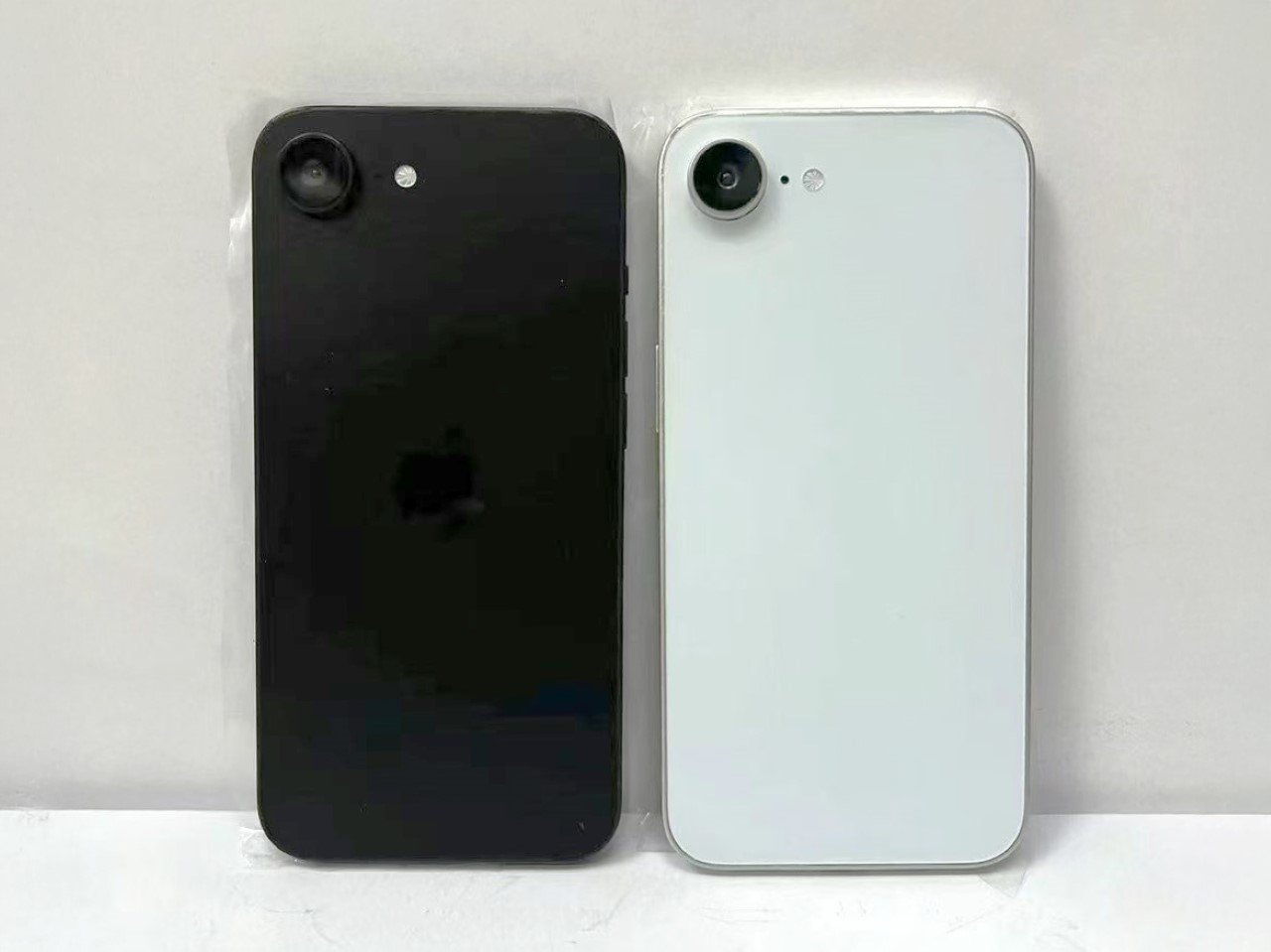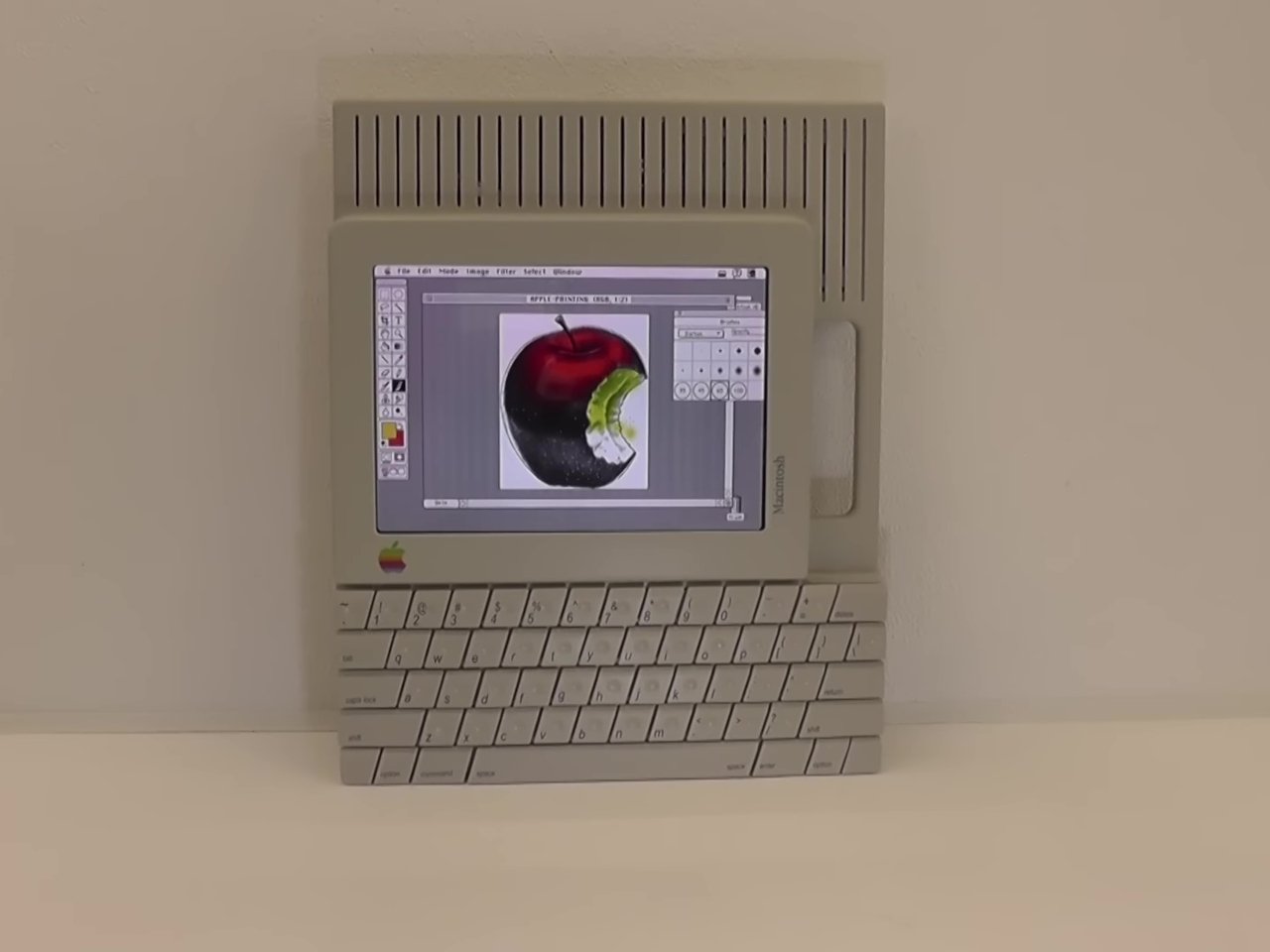Vue normale
-
Articles on TechRepublic
- EU App Store: Apple Removes Thousands of Apps Due to Digital Services Act Requirements
Huawei Releases First Tri-Fold Phone to International Markets
-
Articles on TechRepublic
- UK Government Reportedly Demands Access to Encrypted iCloud Files Worldwide
UK Government Reportedly Demands Access to Encrypted iCloud Files Worldwide
iOS 18.3.1 Release Expected Within the Next Few Weeks
-
Yanko Design

- Apple Researchers Built A Pixar-Style Robot Lamp That Moves And Emotes Like A Living Creature
Apple Researchers Built A Pixar-Style Robot Lamp That Moves And Emotes Like A Living Creature
Apple’s latest experiment in robotics feels like a love letter to Pixar’s Luxo Jr. The tiny, energetic desk lamp that hops onto the screen before every Pixar film has always been more than just a mascot—it’s a symbol of character-driven storytelling. Now, Apple’s researchers have taken that same playful, emotive energy and brought it into a real-world robotic lamp, designed not just to function, but to interact, express, and even entertain. Researchers at Apple presented a paper titled ‘ELEGNT’ (Expressive and Functional Movement Design for Non-Anthropomorphic Robot) along with a comprehensive video of the lamp in action.
There’s a poetic connection here. Steve Jobs, the man who shaped Apple’s design philosophy, was also the visionary who helped Pixar become an animation powerhouse. The DNA of both companies has always been about creating technology that feels approachable—whether through the friendly curves of an iPhone or the lifelike expressions of an animated toy. Apple’s robotic lamp embodies that same philosophy, proving that robots don’t need to be powerful to be meaningful. They just need to be relatable.
Designers: Apple Machine Learning Research Division
![]()
Developed by Apple’s Machine Learning Research division, this robotic lamp is more than an automated light source. It gestures, reacts, and even sulks when it’s left behind. A demonstration video shows it performing tasks in two modes: “Functional,” where it simply executes commands, and “Expressive,” where it adds personality to its movements. The difference is striking. Instead of cold efficiency, the expressive mode makes interactions feel natural—like the lamp is part of the room’s social fabric, not just an object within it.
In one scene, the lamp hears music and starts swaying, an irresistible display of curiosity. In another, it glances outside before describing the weather, as if pausing to check for itself. When it reminds a user to drink water, it nudges the glass forward—not as a command, but as a gentle encouragement. These small but thoughtful gestures tap into something deeply human: the way we naturally ascribe personality to objects that behave in familiar ways.
![]()
This is why anthropomorphism in robotics matters. People don’t just want machines that work—they want machines they can connect with. A robot that can convey joy, hesitation, or even mild disappointment is far more engaging than one that simply executes tasks. It’s a lesson we’ve seen play out in animated films for decades, and it’s one that robotics engineers are beginning to embrace. In a way it also helps shed the impression of robots being scary (Skynet, Terminator, Transformers, Ultron) by embracing more delicate, humane characteristics instead.
Apple’s research aligns with earlier reports from Mark Gurman suggesting the company is developing a home robot with an articulating arm and an iPad-like interface. Speculated to launch by 2026 or 2027, it could integrate with smart home systems and even act as a companion device. If Apple is serious about bringing robotics into consumer spaces, this expressive lamp could be a glimpse of what’s to come.
For now, this experiment serves as a reminder that technology doesn’t have to be rigid or clinical to be useful. The best machines aren’t just the ones that perform tasks efficiently—they’re the ones that make us feel something. And if a desk lamp can make you smile just by hanging its head in disappointment, Apple might be onto something special. You can read the entire research paper on Apple’s website here.
![]()
The post Apple Researchers Built A Pixar-Style Robot Lamp That Moves And Emotes Like A Living Creature first appeared on Yanko Design.
-
Articles on TechRepublic
- Google, Apple Under Investigation to Determine Compliance with New UK Competition Law
Google, Apple Under Investigation to Determine Compliance with New UK Competition Law
Upgrade to the 16″ MacBook Pro and Save 77%
Your Personal Note-Taking Assistant Is Just $39.99 for Life
Samsung Unpacked S25: Galaxy S25 Phone Goes All-In On Google AI
-
Articles on TechRepublic
- Price Drop: Get Ready for the New Tax Year With H&R Block Tax Software, Now $40
Price Drop: Get Ready for the New Tax Year With H&R Block Tax Software, Now $40
Fake Homebrew Google ads target Mac users with malware
-
Yanko Design

- iPhone SE 4 Leaked Photos show Single-Lens Camera, USB-C Port, Mute Switch, and No Capture Button
iPhone SE 4 Leaked Photos show Single-Lens Camera, USB-C Port, Mute Switch, and No Capture Button
Apple’s next budget-friendly smartphone is almost here, and it’s not playing by the old rules. The iPhone SE 4, or what might be called the iPhone 16e, seems ready to shake things up in early 2025. Rumors of a March launch are floating around the interwebs, although there’s no official date in mind (given that Apple hasn’t made any announcements for upcoming keynotes yet). That being said, the iPhone SE 4 is long overdue, given that its predecessor launched in 2022.
A tipster on X shared images of a dummy phone given to case-makers and accessory manufacturers. Touted to be the upcoming iPhone SE 4, the phone gives us a pretty concise idea of what we can expect with Apple’s latest budget-friendly iPhone. Gone are the thick bezels and that physical home button. Instead, you get a 6.1-inch edge-to-edge display that takes cues from the iPhone 14. The shift feels long overdue, but it’s a welcome change. Apple has clearly decided that even its “budget” options shouldn’t look outdated. Whether the device will stick with a notch or adopt the Dynamic Island remains a mystery, but the overall design promises to feel more current than before.
Image via X (@SonnyDickson)
From the rumors circling the internet, it’s not just the look that’s leveling up. The screen technology is taking a leap forward too. Moving from an LCD to OLED is a serious win for anyone upgrading from an older SE. Expect richer colors, better contrast, and improved efficiency. It’s the kind of difference you notice right away—deeper blacks and visuals that just feel more polished. For a phone in this price range, that’s not something you’d usually expect.
And then there’s the long-overdue shift to USB-C. If you’ve been juggling different cables for different devices, this change simplifies things. Even though the port may only support USB 2.0 speeds, the move feels like a step in the right direction. Other visual changes on the phone’s frame include the lack of an action button (we’re back to the old mute switch days), and clearly no Camera Control ‘button’ like Apple announced with the 16 series. The SE 3 didn’t have MagSafe so one could argue the SE 4 might miss it too, although wireless capabilities and MagSafe are really becoming a dominant feature in phones of this supposed price range.
Image via X (@SonnyDickson)
Speaking of upgrades, the camera is getting a major refresh. A 48MP sensor allegedly replaces the old 12MP one, bringing a noticeable bump in photo quality. Whether it’s snapping shots at night or recording 4K video, the iPhone SE 4 will give you more to work with. Apple hasn’t confirmed much about zoom capabilities, but the upgrade alone should satisfy both casual users and anyone who takes their mobile photography seriously. Don’t expect dual-lens camera setups on the SE anytime soon – but even with one lens, the iPhone SE 4 should definitely get the job done.
Under the hood, the SE 4 is rumored to feature Apple’s A18 chip paired with 8GB of RAM. What does that mean for the user? Faster performance, smoother multitasking, and the kind of speed that keeps your phone future-proof for a while. Apple’s massive push towards Apple Intelligence probably means this phone will come with the highly awaited AI assistant. That’s sort of why Apple decided to give the SE 4 the same chip as the iPhone 16 series. More on this when the phone officially launches.
![]()
Curiously, Apple might be rethinking how it positions this phone. The potential rebranding as the iPhone 16e hints at a shift in strategy. Instead of standing out as the “cheap iPhone,” it could become a core part of the lineup—offering flagship features with just a few compromises. That name change, subtle as it seems, could reshape how people perceive the device.
Price-wise, the SE 4 is expected to start at $499. Sure, it’s a bump up from its predecessor, but considering the OLED display, the camera upgrades, and the more powerful chip, it feels justified. You’re getting more for your money, and that’s the bottom line. Regional pricing might vary, but overall, it’s still positioned to attract users who want Apple’s ecosystem without the premium price tag.
![]()
The post iPhone SE 4 Leaked Photos show Single-Lens Camera, USB-C Port, Mute Switch, and No Capture Button first appeared on Yanko Design.
-
Articles on TechRepublic
- Price Drop: Get Ready for the New Tax Year With H&R Block Tax Software, Now $40
Price Drop: Get Ready for the New Tax Year With H&R Block Tax Software, Now $40
-
Articles on TechRepublic
- Advocacy Groups Criticise European Commission for Weak Regulation of Apple, Google
Advocacy Groups Criticise European Commission for Weak Regulation of Apple, Google
How to Break a Phone: Common Causes of Phone Damage
PowerShell Cheat Sheet: The Ultimate Guide for Beginners
-
Articles on TechRepublic
- Nearly Half of Businesses Weaken Sustainability Goals Due to Generative AI Demands, Capgemini Report Reveals
Nearly Half of Businesses Weaken Sustainability Goals Due to Generative AI Demands, Capgemini Report Reveals
EU Approves NVIDIA Deal With Run:ai, Pushes for Apple Interoperability
1980s FlatMac Apple tablet concept becomes reality in this Raspberry Pi iPad mashup
Apple has always been hailed as a trailblazer, breaking new ground in product design and services. Sometimes, however, some of the ideas it generates never materialize, especially if they seem too far ahead of their time. That dream may become a common thing decades later, as proven by one of Apple’s genre-defining products: the iPad.
Although it may seem that it was patterned after the tablet PCs of its time, the Apple iPad actually had an older pedigree, one that never saw the light of day. Thanks to modern technologies like 3D printing and accessible electronics, it is now possible to give those ideas flesh, so to speak, making us wonder what could have been if this portable Macintosh actually made it to market.
Designer: Kevin Noki (original Hartmut Esslingers)
![]()
![]()
![]()
![]()
The so-called “FlatMac” was envisioned by industrial designer Hartmut Esslingers back in the 80s as part of his portfolio that gave birth to the Apple IIc, Macintosh SE, and even Steve Jobs’ NeXT Cube. This was a time when tablet computers were basically unheard of outside of science fiction, and computers that could fit in a briefcase were a luxury very few could afford. While the FlatMac’s design is definitely archaic by today’s standards, it’s also the perfect target for a nostalgic reimagining.
![]()
![]()
![]()
![]()
![]()
Thanks to the ubiquity of 3D printers and 3D printing services, designing and making the distinctive shell of this portable computer turned out to be the easiest part of the project. The video, however, shows just how much we’ve romanticized the process by skipping important but painstaking laborious parts like sanding 3D-printed pieces down repeatedly. There’s definitely a considerable amount of manual labor involved, and that’s not yet getting to the electronics.
![]()
![]()
![]()
![]()
![]()
The bulk of the work for this real-life implementation of the FlatMac concept involves designing the custom-made keyboard, retrofitting hubs and power banks to fit the design, and even soldering new parts together. Fortunately, most of the parts can be bought off the shelf, but that doesn’t make the work easier. Ironically or perhaps fittingly, the display for this iPad predecessor was actually taken from a broken iPad. Even more ironic, the heart and brains of this contraption is also named after a fruit: the Raspberry Pi.
![]()
![]()
![]()
![]()
The end result is a truly impressive product that demonstrates not only the capabilities of modern technologies but also the vision of Esslingers’ original design. This FlatMac implementation even uses an actual floppy disk drive that can be used to install an old Macintosh OS via an emulator. It does support one modern feature that was never available in the 80s: a stylus like the Apple Pencil. It would have been a designer’s dream machine back then, though we can only judge that now thanks to hindsight.
![]()
![]()
The post 1980s FlatMac Apple tablet concept becomes reality in this Raspberry Pi iPad mashup first appeared on Yanko Design.
